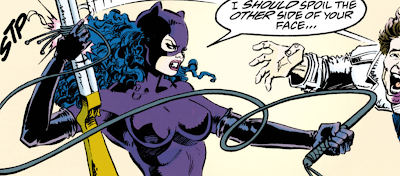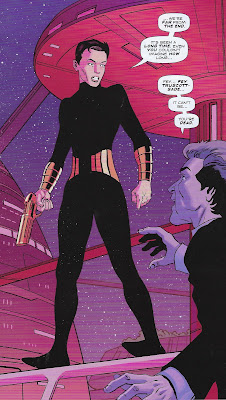A friend sent me the following meme the other day:
Along with the request, "Fact check please."
It's nice to have friends who know you.
It's not just this meme; if you Google "mary somerville scientist," Google actually suggests you add the word "coined" and your results are filled with people making similar claims.
Not only could I fact-check it, I already had. It's a story I've seen reproduced many times in various forms. And it is a great story!
However, like many great stories, it's not really true, so I'm going to write it up here so I can just send people this way next time instead of hunting down my references again.
 |
| Mary Somerville |
However, as James Secord highlights, the term "scientist" only appears in the review as an indication of what Mary Somerville is not:
he did not apply the word to Somerville herself. In his view, she belonged to a more praiseworthy category. Whewell believed that in the rare circumstance when a woman wrote from deep knowledge, she could do so not with a concern for grubby industrial utility but with lucid metaphysical clarity.… If men were active, prone to confusing practice and theory, women were above the fray, giving their reasoning clarity and transparency. By those criteria, Somerville was not a scientist, but instead possessed the superior “talents of a philosopher and a writer.” (48)
If you search the actual review for the word "scientist," it only comes up once, when Whewell is going through a number of different terms you could use to describe "the students of the knowledge of the material world collectively" even when they are all working in different branches of physical science (59). "Scientist" is cited as one possible term proposed at a recent meeting of the British Association for the Advancement of Science, though Whewell doesn't directly claim responsibility for it:
some ingenious gentleman proposed that, by analogy with artist, they might form scientist, and added that there could be no scruple in making free with this termination when we have such words as sciolist, economist, and atheist—but this was not generally palatable… (59)
 |
| William Whewell |
the man is mystified; he is involved in a cloud of words, and cannot see beyond it. He does not know whether his opinions are founded on feeling or on reasoning, on words or on things. He learns to talk of matters of speculation without clear notions; to combine one phrase with another at a venture; to deal in generalities; to guess at relations and bearings; to try to steer himself by anti theses and assumed maxims. Women never do this: what they understand, they understand clearly; what they see at all, they see in sunshine.… [F]rom the peculiar mental character to which we have referred, it follows, that when women are philosophers, they are likely to be lucid ones… (65)
But Somerville is not a scientist, she is a philosopher, and Whewell would have coined the word had he written this review of the Connexions or not.
One other thing you have to remember is that people in the nineteenth century actually did not like the term "scientist".... not even Whewell! It sounds like a job, you know. As opposed to the meme, had he called her a scientist, it would have been no honor. (From my own research, I have found that in fiction, the first character to actually be called a scientist wasn't until 1882, Swithin St. Cleeve the astronomer in Thomas Hardy's Two on a Tower, a full fifty years after the word was coined!)
I always liked this line from H. G. Wells's 1904 novel The Food of the Gods:
In the middle years of the nineteenth century there first became abundant in this strange world of ours a class of men, men tending for the most part to become elderly, who are called, and who are very properly called, but who dislike extremely to be called—“Scientists.” They dislike that word so much that from the columns of Nature, which was from the first their distinctive and characteristic paper, it is as carefully excluded as if it were—that other word which is the basis of all really bad language in this country.
If you search the archives of Nature, it's not quite true that the word "scientist" was literally banned (it was first used in Nature in 1872)... but I was able to find that even in 1924 it was still considered controversial, when one Norman R. Campbell wrote in to say that Nature needed to get over itself and accept it:
Moreover, the word has arrived; there is no chance of suppressing it entirely. Even if so far it were confined wholly to the illiterate—which it most certainly is not—we ought (as the authors of "The King's English" say) to "begin seriously to consider whether it has not been resisted as long as honour demands." Cumbrous circumlocutions, such as "man of science"—offensive to feminists and with an artificial air no artifice can conceal—are wretched substitutes. The idea is definite and important; the discovery that there is something common in the intellectual attitude of all the sciences and foreign to other branches of learning is one of the greatest advances made by the thought of the last century. For a new thing (to quote the same authors) we must have a new name.
The Editor of Nature responded, admitting that "the word 'scientist' has not been used in the columns of Nature to designate a man of science or scientific worker," but calling for opinions from the experts on language (Gregory). Most respondents accepted its use, but many of those acceptances were pretty begrudging, such as that of R. W. Chambers:
Personally, I should say “man of science” rather than “scientist”; but I do not think one can deny to the word scientist its legitimate place in English. It is recorded in the “Oxford Dictionary,” together, I admit, with a good many words which a man does not use if he can help it.








